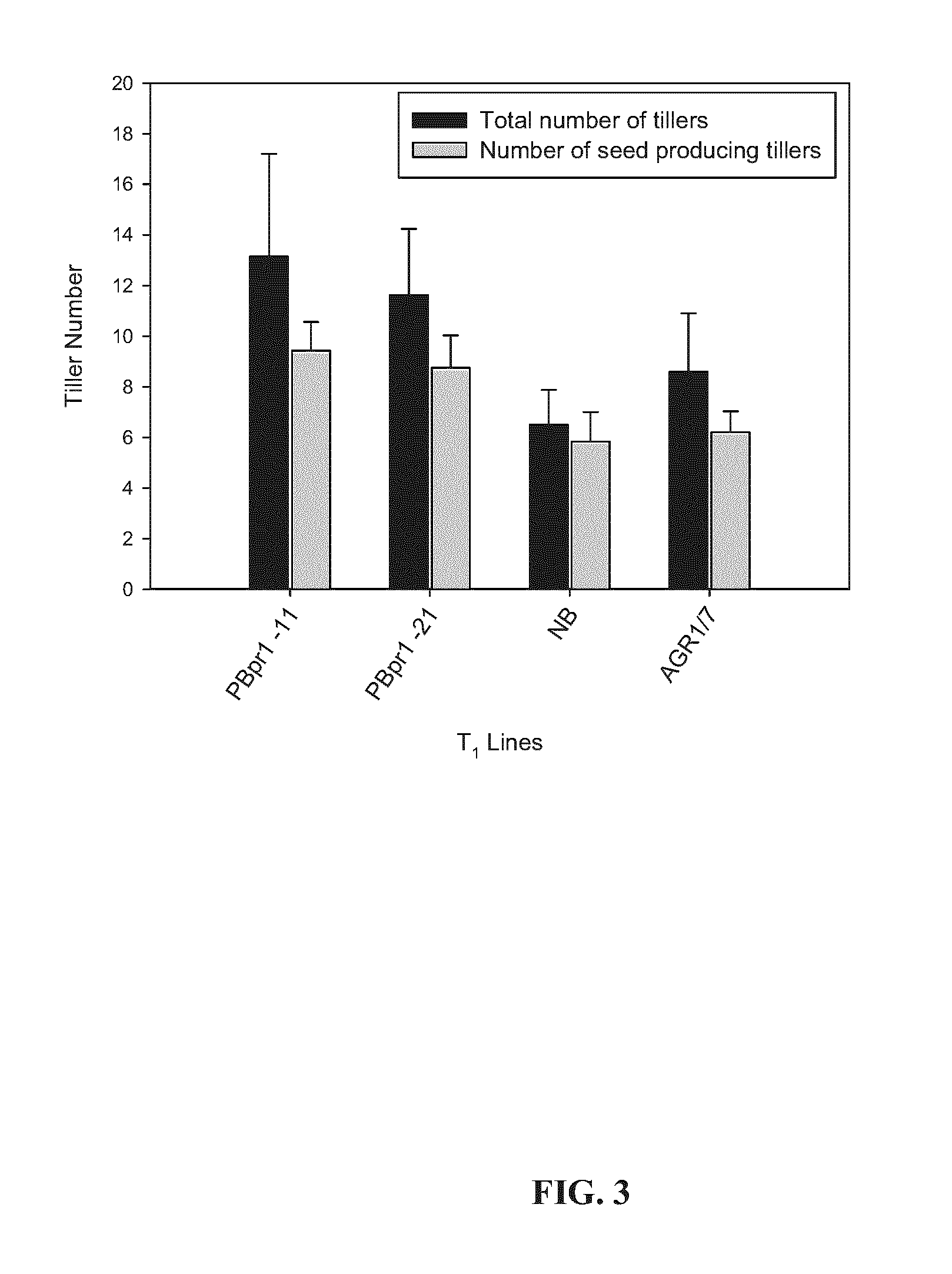Plants having enhanced nitrogen efficiency
- Summary
- Abstract
- Description
- Claims
- Application Information
AI Technical Summary
Benefits of technology
Problems solved by technology
Method used
Image
Examples
example 1
PBpr1 Promoter Fused to the alaAT Gene
Construction of Binary Vectors and Agrobacterium Mediated Transformation
[0102]The PBpr1 promoter was selected and designed to be cloned using GeneArt (Invitrogen, Life Technologies, Carlsbad, Calif., USA). The HvAlaAT cDNA (SEQ ID NO: 2) was introduced into pCAMBIA1300 using a PstI / HindIII ligation while the PBpr1 promoter was introduced upstream of HvAlaAT to drive expression using EcoRI / SacI sites (FIGS. 1,13,14). The PBpr1 promoter was introduced into pCAMBIA1305.1 to drive GUSplus for promoter pattern analysis using the EcoRI / NcoI sites. The constructs were transformed separately into Agrobacterium tumefaciens strain EHA105 by the freeze thaw method (Weigel and Glazebrook, 2002). Rice callus (Oryza sativa c.v. Nipponbare (NB)) was transformed with both constructs, using an Agrobacterium transformation system developed in our laboratory (Shrawat and Good, 2011). Lines transformed with PBpr1::HvAlaAT are referred to herein as PBpr1 lines while...
example 2
PBpr2 Promoter Fused to the alaAT Gene
[0146]
TABLE 3Yield tests and agronomic traits from three PBpr1: AlaAT over-expressing rice lines versus WT.TraitNBPBpr1-11PBpr1-12PBpr1-21Average days to92-10588-9993-10094-110floweringProducing tillers6.56.66.47.2Nonproducing tillers0.250.60.20.4Seed weight10.3 ± 0.5 9.9 ± 0.5 8.5 ± 0.2 9.7 ± 0.5Fresh weight biomass24.9 ± 1.426.9 ± 2.025.5 ± 1.925.7 ± 2.7per plant (g)Dry weight per plant 14.6 ± 0.917.4 ± 1.517.5 ± 1.316.7 ± 2.0(g)% dry weight of NB108%102%103%
[0147]The choice of promoter to use to drive expression of a gene, such as the alanine aminotransferase gene, in crop plants is important for optimal expression of the gene at the right time (developmental stage) and the right place in the plant (tissue specificity). The promoter chosen to drive the expression will affect the phenotypic outcome for the plant. There are examples in the literature where the promoter chosen to drive a gene of interest affects the phenotypic outcome. For examp...
PUM
| Property | Measurement | Unit |
|---|---|---|
| Efficiency | aaaaa | aaaaa |
Abstract
Description
Claims
Application Information
 Login to View More
Login to View More - R&D
- Intellectual Property
- Life Sciences
- Materials
- Tech Scout
- Unparalleled Data Quality
- Higher Quality Content
- 60% Fewer Hallucinations
Browse by: Latest US Patents, China's latest patents, Technical Efficacy Thesaurus, Application Domain, Technology Topic, Popular Technical Reports.
© 2025 PatSnap. All rights reserved.Legal|Privacy policy|Modern Slavery Act Transparency Statement|Sitemap|About US| Contact US: help@patsnap.com



